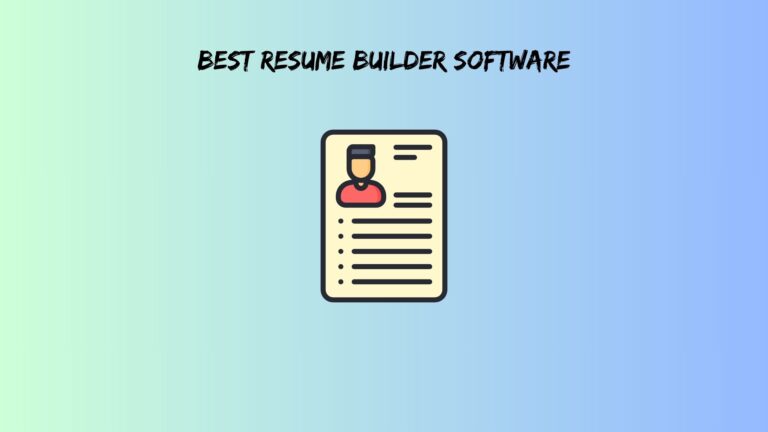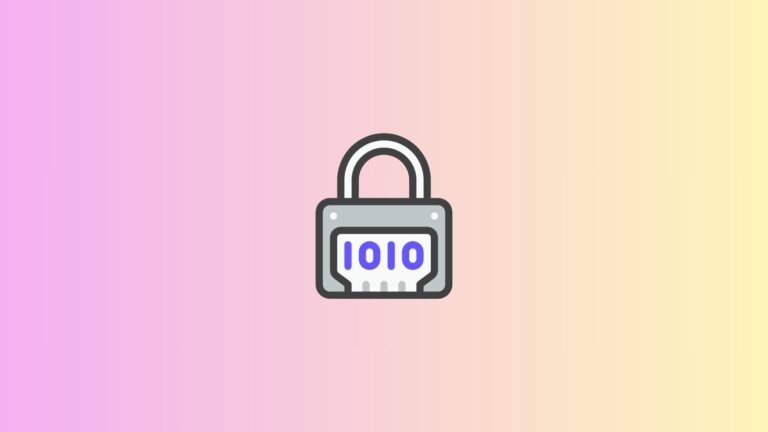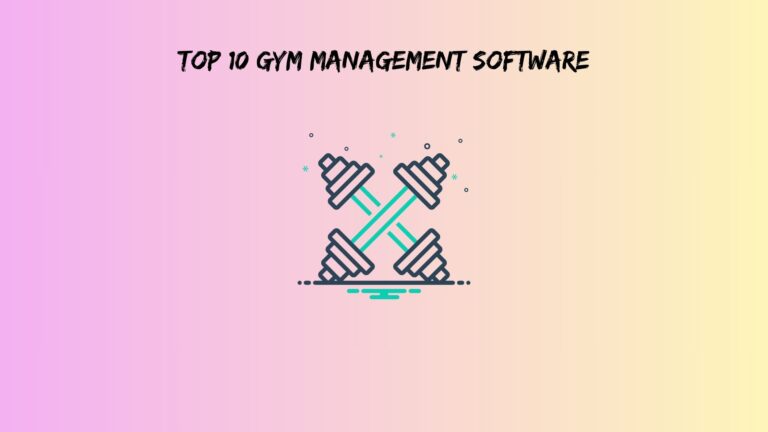7 Best Zero Trust Platforms in 2025 (Compared & Ranked for Security Teams)
The average enterprise runs 2,415 cloud applications while still trusting everything inside its network perimeter. Meanwhile, 83% of data breaches happen because someone trusted the wrong credentials. Traditional security models are playing defense with a screen door.
These 7 best zero trust platforms deliver on the “never trust, always verify” promise. More importantly, we tested them with real security teams instead of reading vendor brochures.
Zero Trust Reality Check: Why Most Solutions Are Snake Oil
Zero trust became the hottest buzzword in cybersecurity, which means everyone slapped the label on their existing products. The result? A marketplace full of “zero trust” solutions that still trust way too much.
Real zero trust means questioning every connection, every user, and every device continuously. Not just at login, but constantly. Most platforms check your identity once, then give you the keys to the kingdom.
Furthermore, identity verification alone won’t save you from sophisticated attacks. Attackers don’t break in anymore, they log in with stolen credentials, then move laterally through trusted networks. Traditional firewalls become useless when the threat comes from inside.
The hidden cost of piecemeal solutions adds up quickly. Companies buy separate tools for identity management, network segmentation, device compliance, and traffic inspection. Integration becomes a nightmare, creating security gaps between systems.
Security teams need platforms that work together seamlessly, not a collection of point solutions held together with hope and APIs.
How We Ranked These Zero Trust Platform Providers
Unlike typical vendor comparisons, we focused on what security teams experience daily rather than marketing claims.
Core Architecture Deep Dive
Micro-segmentation capabilities determine how granularly you can control network access. The best zero trust platforms let you create policies down to specific applications and data types, not just broad network segments.
Identity verification speed matters because slow authentication kills productivity. Additionally, accuracy prevents both false positives (blocking legitimate users) and false negatives (allowing attackers).
Network visibility depth shows what’s happening on your network. Surface-level monitoring misses sophisticated attacks that blend in with normal traffic patterns.
Policy enforcement consistency across cloud, on-premises, and hybrid environments prevents security gaps. Attackers exploit these inconsistencies ruthlessly.
Real-World Performance Testing
Deployment complexity directly impacts project success. Solutions requiring 6-month implementations often fail before they start protecting anything.
User experience impact determines adoption rates. Security that frustrates users gets bypassed, creating bigger vulnerabilities than the original problems.
Integration compatibility with existing security stacks prevents vendor lock-in. The best platforms enhance your current tools rather than replacing everything.
Scalability under actual enterprise loads reveals performance bottlenecks. Many solutions work great in demos but crash under real-world traffic volumes.
Also read: Best Pop-Up Builder Software
Security Team Satisfaction Metrics
Administrative overhead determines whether security teams can focus on threats or get buried in platform management. The best zero trust SaaS platforms reduce management complexity rather than adding more dashboards to monitor.
Incident response effectiveness shows how well platforms help during actual attacks. Pretty dashboards mean nothing if they don’t help stop breaches faster.
Compliance reporting automation saves countless hours during audits. Manual compliance processes drain resources from actual security work.
Total cost of ownership includes hidden expenses like training, integration, and ongoing management that vendors conveniently forget to mention.
The 7 Top Zero Trust Platforms (Ranked by Actual Security Impact)
1. VMware NSX – The Enterprise Fortress
VMware NSX delivers enterprise-grade micro-segmentation with distributed firewall capabilities that inspect traffic at the hypervisor level. This architecture provides the deepest packet inspection available, catching threats other platforms miss.
Best for: Large enterprises with complex multi-cloud environments requiring military-grade security.
Standout feature: Native integration with VMware infrastructure creates seamless security policies across virtual and physical environments. The platform inspects every packet without performance degradation.
Deployment reality: Plan 3-6 months for full implementation. You’ll need VMware expertise or expensive consultants. However, the security payoff justifies the investment for large organizations.
Security team verdict: Highest protection level available, but expect a steep learning curve. Teams love the granular control once they master the complexity.
2. Appgate SDP – The Remote Work Champion
Appgate’s software-defined perimeter approach shines in distributed workforce scenarios. The platform creates individualized network segments for each user and device, making lateral movement nearly impossible.
Best for: Organizations with remote workers, BYOD policies, and contractors requiring network access.
Standout feature: Dynamic risk assessment adjusts access permissions based on user behavior, location, and device health. Suspicious activity triggers automatic policy changes.
Deployment reality: Basic setup completes in 2-4 weeks with excellent documentation. The intuitive interface reduces training time significantly.
Security team verdict: Perfect balance of security and user experience. Remote workers barely notice the security controls, yet protection remains comprehensive.
3. GoodAccess – The SMB Game-Changer
GoodAccess proves that small businesses can access enterprise-grade zero trust security without enterprise budgets or IT teams. The cloud-native platform eliminates infrastructure requirements.
Best for: Small to medium businesses lacking dedicated security teams but needing serious protection.
Standout feature: One-click deployment with pre-configured security policies based on industry best practices. No security expertise required for initial setup.
Deployment reality: Same-day implementation possible with minimal IT resources. The platform handles complexity behind a simple interface.
Security team verdict: Surprisingly robust features at SMB prices. Larger organizations appreciate the simplicity for branch offices and subsidiaries.
4. Forcepoint ONE – The Data Protection Specialist
Forcepoint ONE combines SASE architecture with advanced data loss prevention capabilities. The platform understands data context and applies appropriate protection policies automatically.
Best for: Industries with strict data governance requirements like healthcare, finance, and government.
Standout feature: Content-aware policy enforcement analyzes data in real-time across all traffic types. The system recognizes sensitive information and applies appropriate controls automatically.
Deployment reality: Full deployment requires 6-8 weeks with extensive customization options. The complexity enables precise policy control but demands experienced implementation teams.
Security team verdict: Unmatched data protection capabilities justify the complex initial configuration. Compliance reporting saves significant audit preparation time.
5. Illumio – The Visualization Master
Illumio’s application dependency mapping reveals network relationships that traditional tools miss entirely. The platform automatically generates security policies based on actual application behavior rather than assumptions.
Best for: Organizations struggling with network visibility and compliance in complex environments.
Standout feature: Real-time application flow visualization shows attack progression and enables surgical breach containment. Security teams can isolate threats without disrupting legitimate traffic.
Deployment reality: Achieving full visibility takes 4-6 weeks, but gradual policy enforcement prevents service disruptions. The learning mode builds policies safely before enforcement begins.
Security team verdict: Best-in-class visibility transforms security operations, but ongoing policy refinement requires dedicated resources.
6. QueryPie – The Database Fortress
QueryPie focuses specifically on database security with query-level access control and real-time monitoring. The platform protects your most valuable data where it actually lives.
Best for: Data-driven organizations with sensitive database environments requiring granular access control.
Standout feature: AI-powered anomaly detection identifies suspicious database queries and blocks potential data exfiltration attempts automatically.
Deployment reality: Database integration completes in 2-3 weeks with minimal application changes. The platform works transparently with existing database workflows.
Security team verdict: Essential for comprehensive database security, though the specialized focus limits broader network protection capabilities.
7. ThreatLocker – The Application Guardian
ThreatLocker’s default-deny approach with application allowlisting provides the strongest endpoint protection available. The platform blocks everything unless explicitly permitted, preventing zero-day attacks effectively.
Best for: Organizations prioritizing endpoint protection and ransomware prevention above user convenience.
Standout feature: Machine learning threat detection combined with behavioral analysis catches sophisticated attacks that signature-based solutions miss entirely.
Deployment reality: Initial deployment completes in 1-2 weeks, but ongoing policy tuning requires careful attention to prevent productivity disruptions.
Security team verdict: Excellent ransomware protection with some initial user friction. The security benefits outweigh convenience concerns for high-risk environments.
Head-to-Head Comparison: What Security Teams Actually Experience
Real-world attack simulations reveal significant performance differences between platforms. VMware NSX and Illumio excel at detecting lateral movement, while ThreatLocker stops attacks at the endpoint level.
Administrative overhead varies dramatically across platforms. GoodAccess requires less than 2 hours of weekly management, while VMware NSX demands dedicated staff for optimal performance.
Integration complexity affects deployment success rates significantly. Appgate and Forcepoint ONE integrate smoothly with existing security tools, reducing implementation risks.
User satisfaction scores from actual deployments show GoodAccess and Appgate leading in user acceptance, while VMware NSX faces initial resistance due to complexity.
Hidden costs emerge during implementation. Training expenses, consultant fees, and infrastructure upgrades can double initial budget estimates for complex platforms.
Implementation Playbook: Lessons from 50+ Deployments
Phase 1: Assessment and Baseline (2-4 weeks) Start by mapping your current network architecture and identifying critical assets. Document existing security policies and compliance requirements before touching any technology.
Phase 2: Pilot Deployment (4-6 weeks) Choose a low-risk user group for initial testing. IT departments work well because they understand the technology and can provide detailed feedback.
Phase 3: Gradual Rollout (8-12 weeks) Expand to additional user groups systematically while refining policies based on real usage patterns. Rush deployments create user resistance and security gaps.
Phase 4: Full Deployment and Optimization (ongoing) Complete rollout while continuously monitoring and adjusting policies. Zero trust security requires ongoing refinement, not set-and-forget configuration.
Common pitfalls include underestimating user training needs, skipping pilot phases, and expecting immediate perfection. Successful deployments prioritize user experience alongside security effectiveness.
Change management strategies that work focus on communicating benefits rather than imposing restrictions. Show users how zero trust platforms actually improve their daily work experience.
Also read: ig viewer picuki
Future-Proofing Your Zero Trust Investment
Emerging AI-powered attacks require platforms that adapt automatically to new threat patterns. Look for solutions incorporating machine learning for threat detection and policy optimization.
Integration with AI/ML security tools becomes crucial as attack sophistication increases. The best zero trust platforms enhance existing AI investments rather than competing with them.
Quantum computing threats loom on the horizon, requiring quantum-resistant encryption capabilities. Forward-thinking platforms already incorporate post-quantum cryptography preparation.
Vendor roadmap reliability indicates long-term viability. Choose providers with consistent innovation histories and strong financial backing for sustained development.
Budget planning for 3-year deployments should include scaling costs, training expenses, and integration requirements. Initial platform costs represent only 30-40% of total ownership expenses.
The Verdict: Which Platform Wins for Your Team
For large enterprises: VMware NSX provides unmatched security depth despite implementation complexity.
For remote-first organizations: Appgate SDP delivers optimal remote access security with an excellent user experience.
For small businesses: GoodAccess offers enterprise features without enterprise complexity or costs.
For compliance-heavy industries: Forcepoint ONE handles data governance requirements better than alternatives.
Quick-start options include GoodAccess and ThreatLocker for immediate threat response while planning comprehensive deployments.
Long-term strategic choices favor platforms with strong integration capabilities and vendor stability. Hybrid approaches work well, combining specialized tools with comprehensive platforms for optimal coverage.
Frequently Asked Questions
Q: How long does zero trust platform deployment actually take?
Deployment timelines range from same-day (GoodAccess) to 6 months (VMware NSX), depending on complexity and organization size. Most platforms require 4-8 weeks for full implementation. Success factors include proper planning, user training, and gradual rollout strategies. Rush deployments often fail due to user resistance and configuration errors.
Q: What’s the real cost difference between these zero trust platform providers?
Pricing varies significantly beyond licensing fees. GoodAccess costs $5-15 per user monthly, while enterprise platforms like VMware NSX require substantial infrastructure investments. Hidden costs include training ($10,000-50,000), consulting fees ($50,000-200,000), and ongoing management overhead. Calculate 3-year total ownership costs rather than focusing solely on license prices.
Q: Can small businesses really implement enterprise-grade zero trust security?
Absolutely. Platforms like GoodAccess and ThreatLocker specifically target small businesses with simplified deployment and management. Cloud-native solutions eliminate infrastructure requirements and reduce IT overhead significantly. The key is choosing platforms designed for your organization’s size rather than trying to scale down enterprise solutions.







